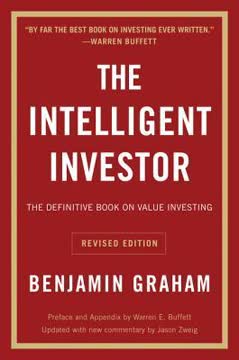Key Takeaways
1. Invest with a margin of safety to protect against losses
The purpose of the margin of safety is to render the forecast unnecessary.
Safety first. The margin of safety is the cornerstone of Graham's investment philosophy. It involves buying securities at a significant discount to their intrinsic value, providing a buffer against potential losses. This approach helps protect investors from poor business performance, market volatility, and analytical errors.
Practical application:
- Look for stocks trading below their net current asset value
- Seek bonds selling at a discount to par value
- Focus on companies with low debt-to-equity ratios
- Prefer stocks with price-to-earnings ratios below the market average
By consistently applying the margin of safety principle, investors can minimize downside risk while positioning themselves for potential upside.
2. Distinguish between investing and speculation
An investment operation is one which, upon thorough analysis, promises safety of principal and an adequate return. Operations not meeting these requirements are speculative.
Define your approach. Graham emphasizes the importance of clearly differentiating between investing and speculation. Investing involves thorough analysis, a focus on preserving capital, and seeking reasonable returns. Speculation, on the other hand, relies on market timing, short-term price movements, and often disregards fundamental value.
Key distinctions:
- Investors focus on long-term business performance; speculators on short-term price movements
- Investors seek safety of principal; speculators accept higher risk for potentially higher returns
- Investors analyze financial statements; speculators often rely on market trends or rumors
By understanding this distinction, investors can avoid common pitfalls and maintain a disciplined approach to building wealth over time.
3. Focus on business fundamentals, not market fluctuations
In the short run, the market is a voting machine but in the long run, it is a weighing machine.
Long-term perspective. Graham argues that investors should concentrate on the underlying business fundamentals rather than short-term market movements. While market prices can be irrational in the short term, they eventually reflect the true value of a company's business over time.
Key fundamentals to analyze:
- Earnings history and stability
- Dividend record
- Balance sheet strength
- Competitive position in the industry
- Management quality and integrity
By focusing on these factors, investors can make informed decisions based on a company's intrinsic value, rather than being swayed by market sentiment or temporary price fluctuations.
4. Diversify your portfolio to manage risk
The only way to deal with risk is to spread it around.
Spread your bets. Diversification is a crucial risk management strategy for investors. By spreading investments across different asset classes, industries, and geographic regions, investors can reduce the impact of poor performance in any single investment on their overall portfolio.
Diversification strategies:
- Invest in a mix of stocks, bonds, and cash
- Include both growth and value stocks
- Consider international markets
- Allocate across various sectors and industries
- Include both large-cap and small-cap stocks
While diversification doesn't guarantee profits or protect against losses, it helps mitigate risk and can lead to more consistent long-term returns.
5. Understand the difference between price and value
Price is what you pay. Value is what you get.
Value over price. Graham emphasizes that investors should focus on the intrinsic value of a security rather than its market price. Price is simply what the market is currently willing to pay, while value represents the actual worth of the underlying business.
Determining value:
- Analyze financial statements
- Assess the company's competitive position
- Consider future growth prospects
- Evaluate management quality
- Factor in industry trends and economic conditions
By understanding this distinction, investors can identify opportunities where market prices diverge significantly from intrinsic value, potentially leading to profitable investments.
6. Be wary of overhyped growth stocks and new issues
The more enthusiastic investors become about the stock market in the long run, the more certain they are to be proved wrong in the short run.
Skepticism pays. Graham cautions investors against getting caught up in market hype, particularly around high-growth stocks and initial public offerings (IPOs). These investments often come with inflated valuations and unrealistic expectations, leading to potential disappointment and losses.
Red flags to watch for:
- Extremely high price-to-earnings ratios
- Rapid revenue growth without corresponding profit growth
- Overly optimistic projections from management or analysts
- Lack of a clear competitive advantage
- Heavy insider selling
By maintaining a skeptical approach and focusing on fundamentals, investors can avoid costly mistakes and protect their capital from speculative bubbles.
7. Practice disciplined, unemotional investing
The investor's chief problem—and even his worst enemy—is likely to be himself.
Control your emotions. Graham emphasizes the importance of maintaining a disciplined, unemotional approach to investing. Many investors fall prey to fear and greed, leading to poor decision-making and suboptimal returns.
Strategies for emotional control:
- Develop a clear investment plan and stick to it
- Avoid making impulsive decisions based on short-term market movements
- Regularly rebalance your portfolio to maintain your target asset allocation
- Consider dollar-cost averaging to remove timing decisions
- Keep a long-term perspective and avoid obsessing over daily price fluctuations
By mastering their emotions and maintaining discipline, investors can avoid common behavioral pitfalls and improve their long-term results.
8. View market fluctuations as opportunities, not threats
The intelligent investor is a realist who sells to optimists and buys from pessimists.
Embrace volatility. Graham encourages investors to view market fluctuations as opportunities rather than threats. Instead of fearing market declines, intelligent investors use them to buy quality assets at discounted prices.
Capitalizing on market fluctuations:
- Maintain a watchlist of quality companies to buy during market downturns
- Set target prices for buying and selling based on intrinsic value estimates
- Use market dips to add to existing positions in strong companies
- Consider selling overvalued holdings during market euphoria
- Keep cash reserves available to take advantage of sudden opportunities
By adopting this mindset, investors can turn market volatility into a source of potential profit rather than anxiety.
9. Analyze financial statements to uncover hidden value
The secret of sound investment in three words: margin of safety.
Do your homework. Graham emphasizes the importance of thorough financial analysis to uncover hidden value and potential risks. By carefully examining financial statements, investors can gain insights that may not be apparent from surface-level metrics or market sentiment.
Key areas to analyze:
- Balance sheet: Look for strong asset coverage and low debt levels
- Income statement: Assess profitability trends and earnings quality
- Cash flow statement: Evaluate the company's ability to generate and manage cash
- Footnotes: Scrutinize for potential red flags or hidden liabilities
- Historical performance: Analyze trends over multiple years
Through diligent analysis, investors can identify undervalued opportunities and avoid potential pitfalls that may not be immediately obvious.
10. Seek companies with strong, consistent financial performance
The stock investor is neither right nor wrong because others agreed or disagreed with him; he is right because his facts and analysis are right.
Quality matters. Graham advocates focusing on companies with a proven track record of strong and consistent financial performance. These companies are more likely to weather economic downturns and provide stable returns over the long term.
Characteristics of strong performers:
- Consistent earnings growth over multiple years
- Stable or increasing profit margins
- Strong return on equity (ROE)
- Manageable debt levels
- Consistent dividend payments and growth
- Competitive advantages in their industry
By prioritizing companies with these qualities, investors can build a portfolio of reliable, high-quality businesses that are more likely to deliver satisfactory long-term results.
</rewrite>
Last updated:
FAQ
What's The Intelligent Investor about?
- Investment Philosophy: The Intelligent Investor by Benjamin Graham focuses on value investing, advocating for a disciplined approach to investing in stocks and bonds. It emphasizes the importance of analyzing a company's fundamentals over market speculation.
- Investor Types: Graham categorizes investors into defensive (passive) and enterprising (active) types, each with tailored strategies for stock selection and portfolio management.
- Market Behavior Insights: The book provides insights into market fluctuations and investor psychology, encouraging rational decision-making and a long-term perspective.
Why should I read The Intelligent Investor?
- Timeless Principles: The book offers investment principles that have proven effective over decades, making it a foundational text for investors. Warren Buffett endorses it as "the best book about investing ever written."
- Risk Management: It teaches risk management through concepts like the "margin of safety," crucial for both novice and experienced investors.
- Behavioral Insights: Graham delves into the psychological aspects of investing, helping readers understand their biases and improve decision-making.
What are the key takeaways of The Intelligent Investor?
- Investment vs. Speculation: Graham defines investment as an operation promising safety of principal and adequate return, contrasting it with speculation, which lacks these assurances.
- Margin of Safety: This central concept advises buying securities below their intrinsic value to minimize risk.
- Market Fluctuations: Investors should view market fluctuations as opportunities, using them to buy low and sell high, rather than reacting emotionally.
What is the "margin of safety" concept in The Intelligent Investor?
- Definition: The "margin of safety" is the difference between a stock's intrinsic value and its market price, providing a buffer against errors and market downturns.
- Risk Minimization: By buying at prices well below intrinsic value, investors protect against unforeseen downturns and judgment errors.
- Practical Application: Investors should assess intrinsic value before purchasing and aim to buy when the market price is significantly lower.
How does Benjamin Graham differentiate between defensive and enterprising investors in The Intelligent Investor?
- Defensive Investors: These investors prioritize safety and minimal effort, typically investing in a balanced portfolio of high-grade bonds and leading common stocks.
- Enterprising Investors: They are willing to devote time and effort to select securities that are sound and more attractive than average, seeking higher returns.
- Investment Strategies: Defensive investors focus on stability, while enterprising investors actively seek undervalued stocks and special situations.
How does The Intelligent Investor address market fluctuations?
- Market Psychology: Graham discusses how market fluctuations are often driven by emotions rather than fundamentals, encouraging rational responses.
- Opportunities in Volatility: Market downturns can present buying opportunities for intelligent investors, who should maintain a long-term perspective.
- Mr. Market Analogy: The "Mr. Market" metaphor illustrates the stock market's irrational behavior, advising investors to use fluctuations as decision-making tools.
What are the best quotes from The Intelligent Investor and what do they mean?
- "The market is a pendulum...": This quote illustrates the cyclical nature of market sentiment, reminding investors to remain grounded.
- "Investing isn't about beating others...": Emphasizes self-discipline and emotional control, suggesting personal behavior is key to success.
- "Those who do not remember the past...": Stresses the importance of historical knowledge in investing, encouraging learning from past cycles.
How can I apply the principles of The Intelligent Investor to my own investing?
- Conduct Thorough Analysis: Perform a thorough analysis of a company’s fundamentals, including earnings and financial health, before investing.
- Establish a Margin of Safety: Aim to purchase stocks at a price significantly below their intrinsic value to create a margin of safety.
- Maintain Discipline: Stick to your investment strategy and avoid emotional reactions to market fluctuations, focusing on long-term goals.
What are the risks associated with investing in common stocks according to The Intelligent Investor?
- Market Volatility: Common stocks are subject to significant price fluctuations, which can lead to temporary losses.
- Overvaluation Risks: High price-to-earnings ratios can expose investors to overvaluation risks, leading to potential losses if the market corrects.
- Psychological Factors: Emotions can be an investor's worst enemy, leading to panic selling or irrational exuberance.
How does Graham suggest handling market downturns in The Intelligent Investor?
- Stay Calm and Rational: Avoid panic selling during downturns and view declines as opportunities to buy quality stocks at lower prices.
- Rebalance Your Portfolio: Consider rebalancing to maintain desired asset allocation, selling stocks that have risen and buying those that have fallen.
- Focus on Fundamentals: Keep focus on the underlying fundamentals of investments rather than market price, trusting that strong fundamentals will lead to recovery.
What role do dividends play in The Intelligent Investor?
- Sign of Financial Health: Dividends indicate a company's financial stability and profitability, often seen as a reliable investment sign.
- Total Return: Dividends contribute significantly to an investor's total return over time, emphasizing their importance in investment strategy.
- Investment Strategy: A strong dividend history can indicate a company's commitment to returning value to shareholders, making it an important evaluation factor.
How does The Intelligent Investor suggest evaluating stocks?
- Fundamental Analysis: Emphasizes examining a company's financial statements, earnings, and business model to assess true value.
- Price-to-Earnings Ratio: Advises using the P/E ratio as a key valuation metric, with a lower ratio indicating potential undervaluation.
- Long-Term Performance: Focus on long-term performance and stability, with consistent earnings growth and solid dividend history as positive indicators.
Review Summary
The Intelligent Investor is widely regarded as a classic guide to value investing. Readers praise its timeless principles and insights, though some find it dense and outdated. The book emphasizes long-term investing, understanding company fundamentals, and maintaining a margin of safety. Many consider it essential reading for investors, with Warren Buffett's endorsement adding to its reputation. While some struggle with its complexity, others appreciate its depth and historical perspective. The updated commentary by Jason Zweig helps contextualize Graham's teachings for modern readers.
Similar Books
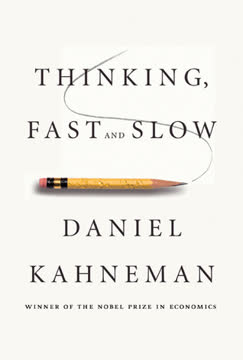
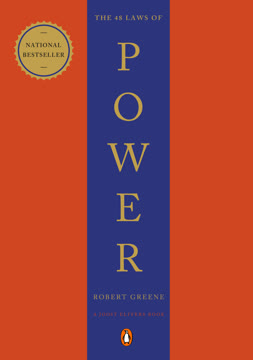

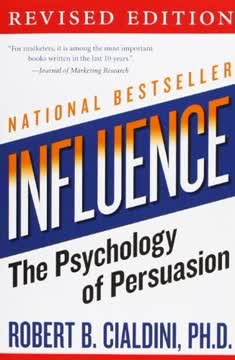


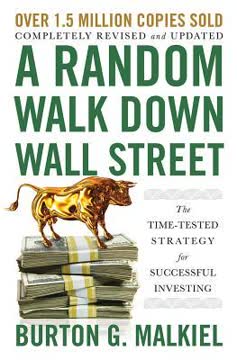
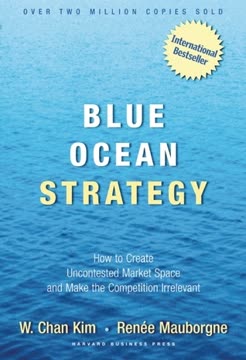


Download PDF
Download EPUB
.epub digital book format is ideal for reading ebooks on phones, tablets, and e-readers.
